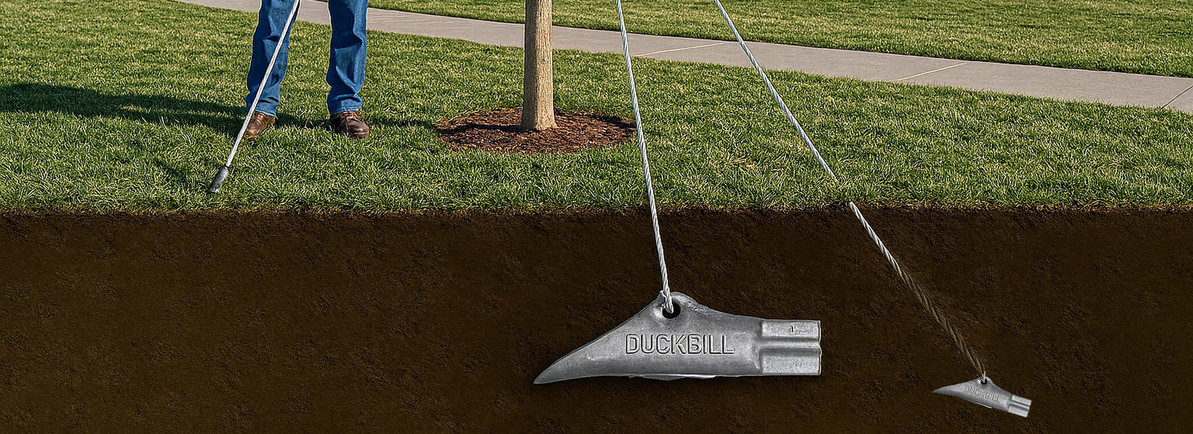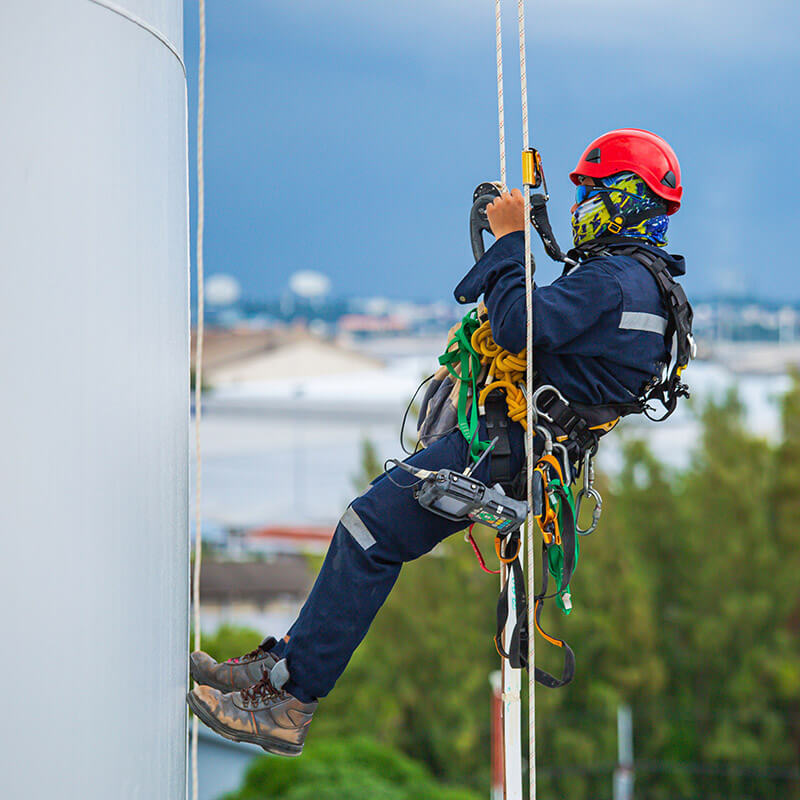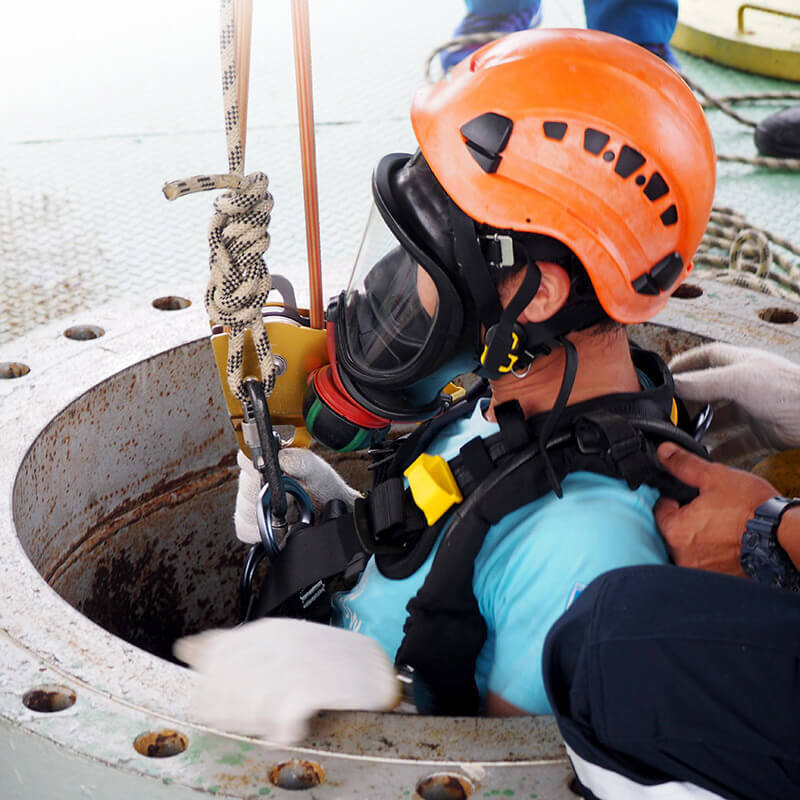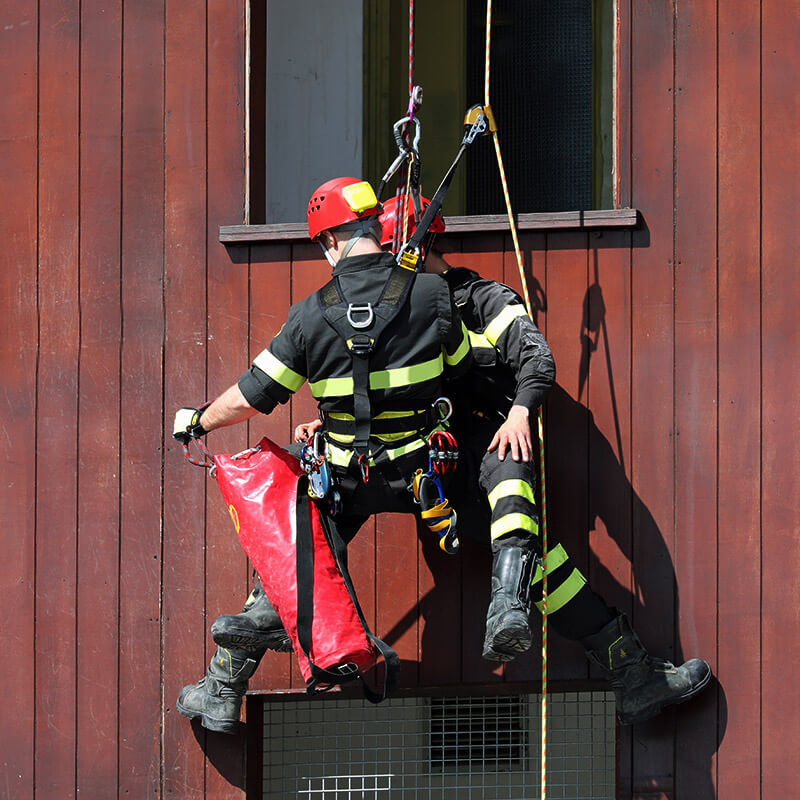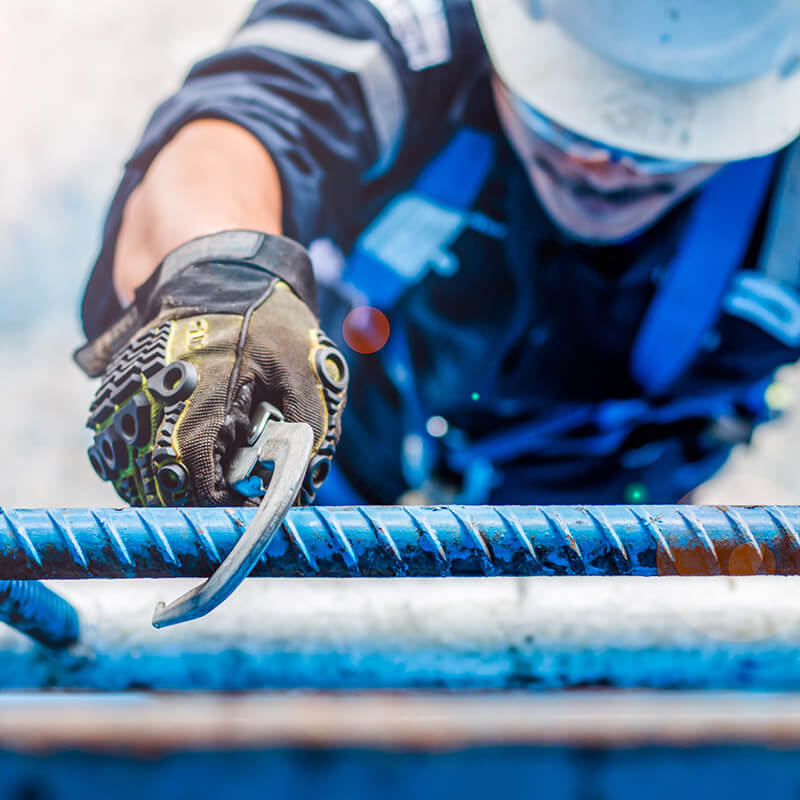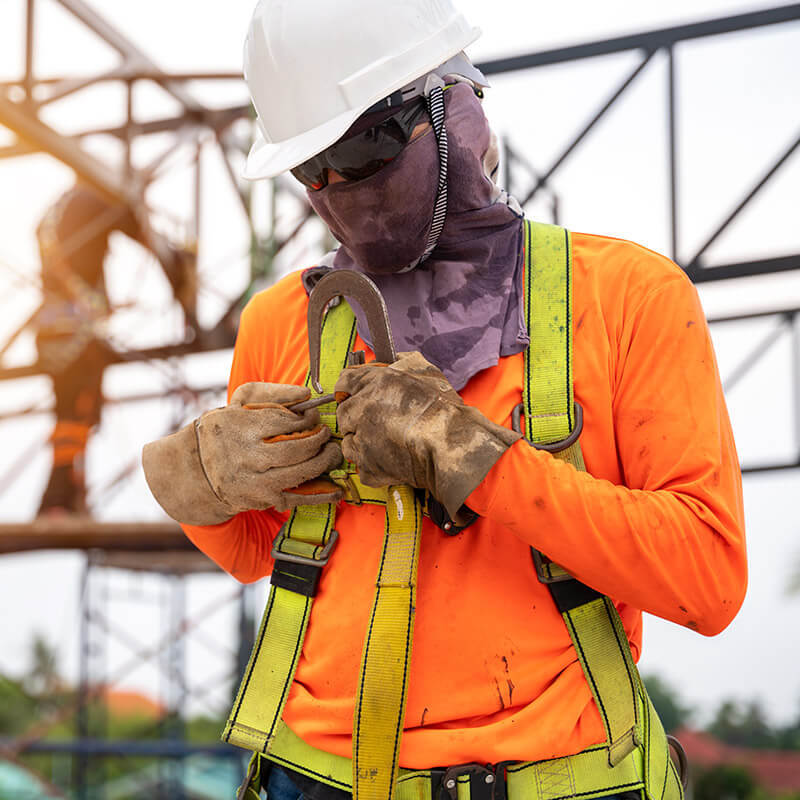What Are DuckBill Anchors Used For?
DuckBill Earth Anchors are trusted ground anchoring solutions used across the construction, landscaping, utility, and environmental sectors. Engineered for rapid deployment and high holding capacities—from 300 lbs to over 3,000 lbs—DuckBill anchors are ideal for securing trees, poles, erosion control systems, and lightweight structures.
Key Takeaways
- Secure outdoor items, structures, and erosion control systems
- Ideal for light to moderate loads in standard soil types
- Professional-grade holding capacity with fast installation
- Minimal soil disturbance, environmentally friendly
- Range of models available for different load and soil conditions
Understanding DuckBill Anchors: Design and Functionality
The Unique Design of DuckBill Anchors
DuckBill anchors feature a bill-shaped tip and steel shaft that penetrate and rotate into undisturbed soil during installation. Once tensioned, the anchor rotates horizontally and locks in place, creating a load-bearing plane beneath the surface.
How DuckBill Anchors Work
Installed using a drive rod and hammer or power tool, the anchor is driven to depth and then tensioned to rotate into a load-locked position. This simple, effective mechanism resists uplift and shear forces, making it suitable for structural anchoring, guying, and slope stabilization.
Types and Sizes of DuckBill Anchors
DuckBill anchors are available in several models, each designed for specific load capacities and applications. The main series include:
- 40-DB1: Holds up to 300 lbs – Ideal for light-duty tasks like landscaping, small tents, and garden structures.
- 68-DB1: Holds up to 1,100 lbs – Commonly used in light construction, signage, and medium-sized installations.
- 88-DB1: Holds up to 2,000 lbs – Suitable for utility poles, tree guying, and larger structural anchoring.
- 138-DB1: Holds 3,000 lbs and above – Designed for heavy-duty applications including erosion control, retaining structures, and commercial construction.
Each anchor type is engineered for easy installation and long-lasting performance in its intended use case.
Browse DuckBill anchor models on Lifting.com.
Common Applications of DuckBill Anchors
- Securing portable buildings and sheds
- Tree anchoring and stabilization
- Soil erosion and slope stabilization
- Anchoring signage, tents, and fencing
- Utility pole and pipeline support
Compliance with ANSI, OSHA, and ASME Standards
DuckBill anchors are not classified under specific ANSI or ASME designations. However, when used in industrial or commercial settings, contractors and engineers should ensure that their use aligns with applicable OSHA regulations for materials handling and ground anchoring, such as 1926 Subpart H.
These anchors are designed for applications like tethering, guying trees, utility poles, signage, and erosion control structures—not for personal fall protection systems. It is the responsibility of the installer to verify that anchor selection meets the structural and safety requirements of the specific project and jurisdiction.
Installation Process
- Drive the anchor into the soil using a drive rod and hammer or hydraulic tool
- Remove the rod and apply upward tension to rotate and lock the anchor
- Attach guy wires, cables, or straps as needed
This process creates minimal soil disturbance and requires no excavation or concrete.
Benefits of DuckBill Anchors
- Labor Efficiency: Fast, one-person installation
- Environmental Friendliness: No concrete, minimal site impact
- Reliability: Tested holding capacities under a variety of soils
Conclusion
DuckBill Earth Anchors deliver a high-strength, low-impact anchoring solution that’s ideal for professionals in construction, utilities, and landscaping. Their broad model range ensures the right product for your load and soil type, while their simple installation keeps your project efficient and compliant.
To find the right DuckBill anchor for your job, visit our collection here. Also, visit our website Lifting.com where we all of your rigging and lifting equipment supplies as well as Pewag Security Chains and Helical anchors as well.
FAQs
What is a DuckBill anchor used for?
DuckBill anchors are used to secure structures, trees, poles, signs, and erosion control systems in soil.
How do DuckBill anchors work?
They are driven into the ground, then rotated under tension to lock in place, resisting uplift and movement.
What are the benefits of using DuckBill anchors?
They are quick to install, environmentally friendly, and offer high load capacity in various soil types.
What sizes are available?
DuckBill anchors range from DB1 (300 lbs) to DB4 (3,000+ lbs), each suited for different applications and soil conditions.
Are DuckBill anchors compliant with OSHA or ASME standards?
While not directly regulated by ANSI or ASME, projects may require OSHA-compliant use depending on application. Always verify load and safety requirements.
What’s the Best Material for Rigging?
Dec 18th 2025
What Is the 10-Foot Rule for Rigging?
Dec 15th 2025
What Are the Different Types of Climbing Ropes?
Dec 11th 2025
What Type of Rope Is Best for Climbing?
Dec 9th 2025
What Are the Two Types of Kernmantle Rope?
Nov 25th 2025
What Is a Kernmantle Rope Used For?
Nov 21st 2025
What Is a Fall Protection Harness?
Nov 14th 2025
What are the four components of a PFAS?
Nov 7th 2025
Is Palmer Safety OSHA Compliant?
Nov 3rd 2025

